The Radeon R9 280X Review: Feat. Asus & XFX - Meet The Radeon 200 Series
by Ryan Smith on October 8, 2013 12:01 AM ESTOverclocking
With our look at the stock performance of our 280X cards complete, let’s take a brief look at overclocking.
When it comes to overclocking this is going to be a somewhat unfair competition for the two cards. The Asus card has by the very necessity of its existence already been binned. Furthermore while the Asus card supports voltage adjustments the XFX card does not (MSI Afterburner says it does, but adjusting the value has no effect). As such we get to drive what’s already a better GPU harder and with more voltage than the other. Still, this will give us the chance to see where everything will top out at.
| Radeon R9 280X Overclocking | ||||
| XFX Radeon R9 280X DD | Asus Radeon R9 280X DCU II TOP | |||
| Shipping Core Clock | 850MHz | 970MHz | ||
| Shipping Boost Clock | 1000MHz | 1070Mhz | ||
| Shipping Memory Clock | 6GHz | 6.4GHz | ||
| Shipping Boost Voltage | 1.2v | 1.2v | ||
| Overclock Core Clock | 880MHz | 1010MHz | ||
| Overclock Boost Clock | 1030MHz | 1110MHz | ||
| Overclock Memory Clock | 6.6GHz | 6.8GHz | ||
| Overclock Max Boost Voltage | 1.2v | 1.263v | ||
As it turns out, neither card overclocked by very much. The XFX card, lacking additional voltage, could only do 30MHz more, for a 4% base/3% boost overclock. Better luck was found on the memory with a 600MHz (10%) overclock there. The Asus card meanwhile was good for 40MHz more, for a 4% base/4% boost overclock, while its memory could do an additional 800MHz (13%). But at the same time this required dialing the voltage up to 1.263v – as high as we’re willing to go for this card. The power cost of doing that will be extreme.
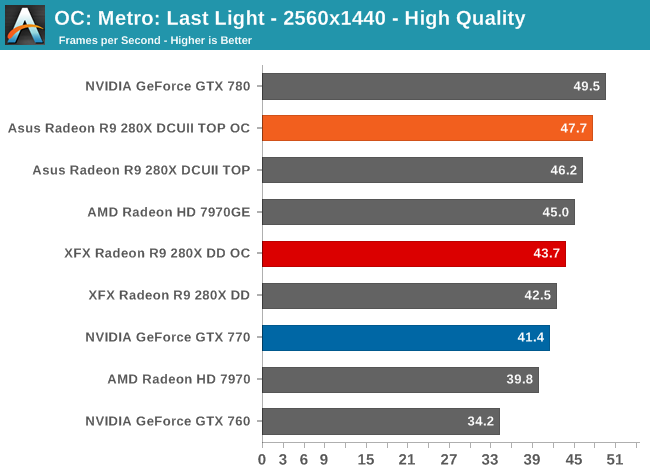
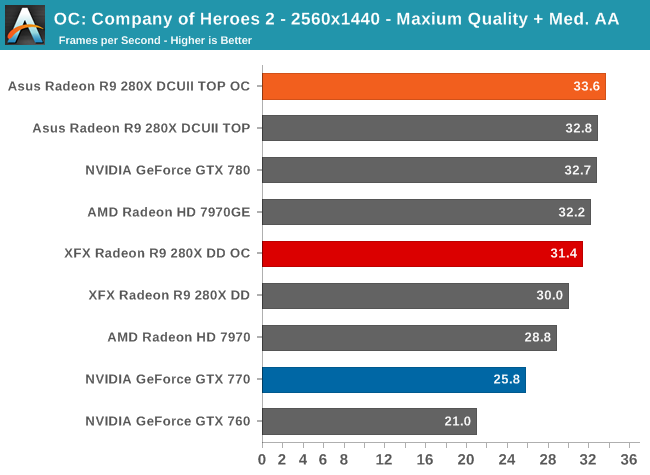
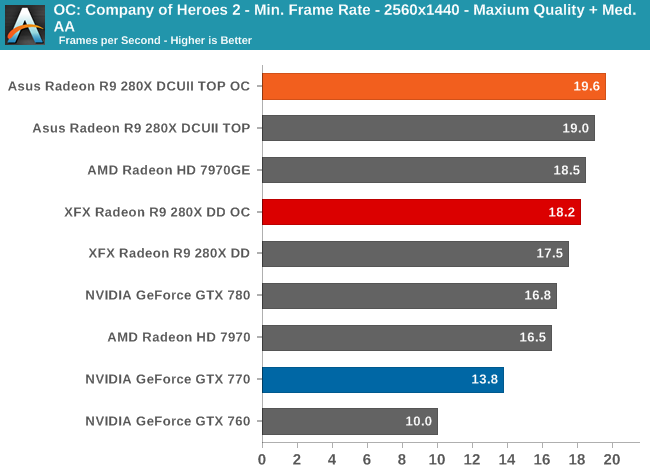
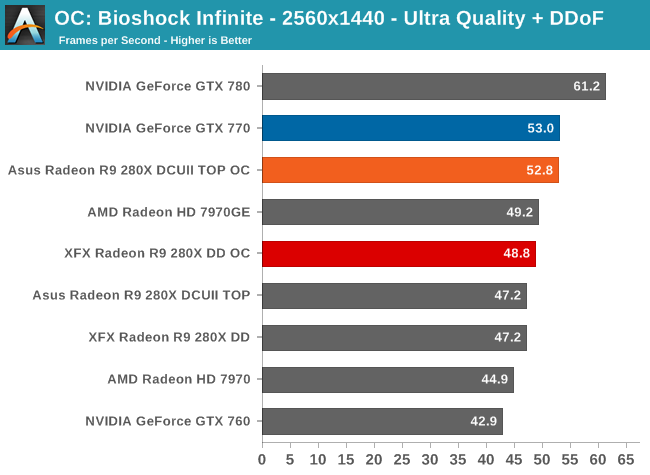
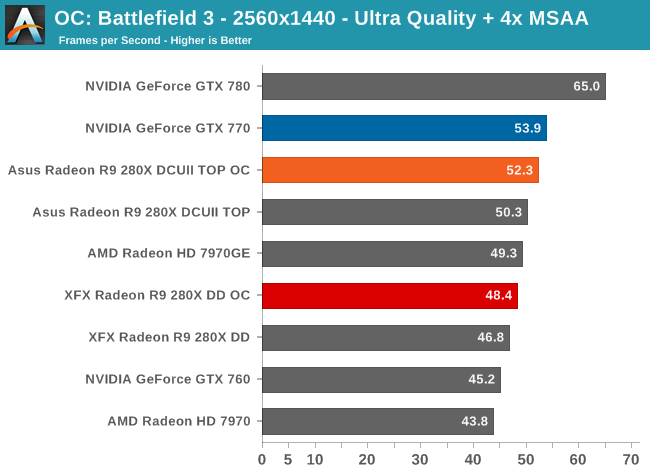
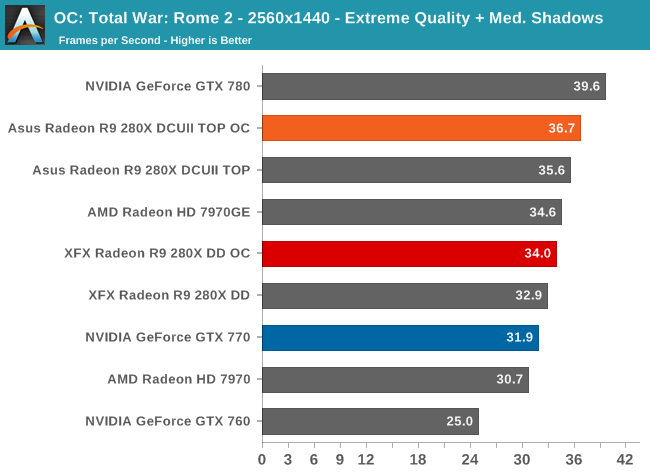
With our 280X cards primarily bottlenecked by GPU performance as opposed to memory performance, the performance gains from our overclocking adventure is limited. 3% on average for both cards is 3% for free, but it’s barely a useful overclock. We typically need 5% before overclocks start becoming interesting and significant enough to improve playability or make higher graphical settings practical.
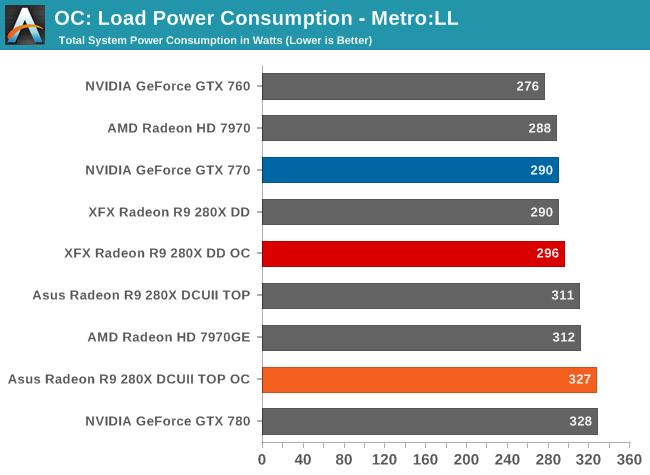
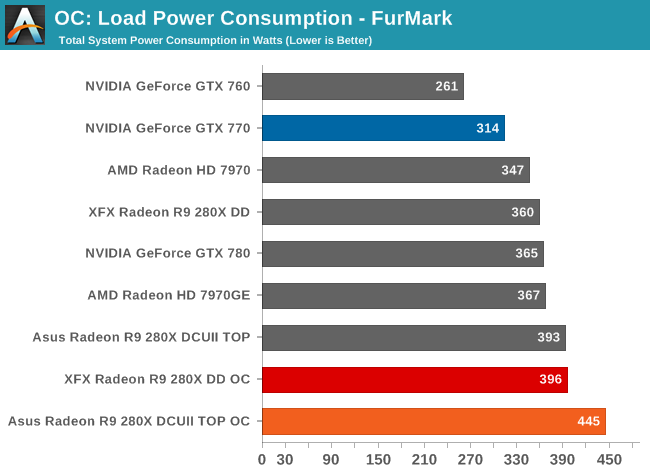
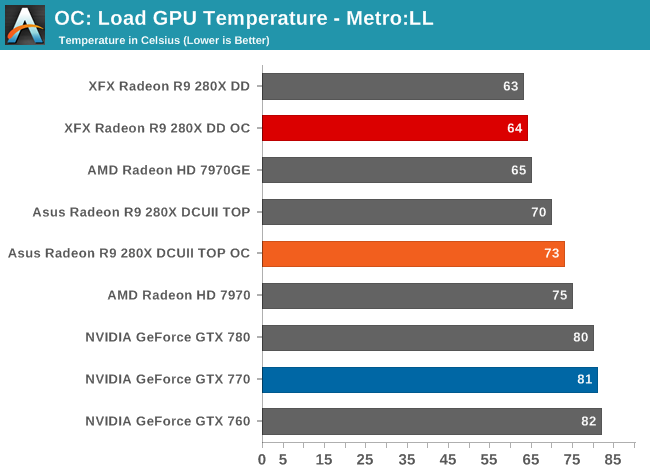
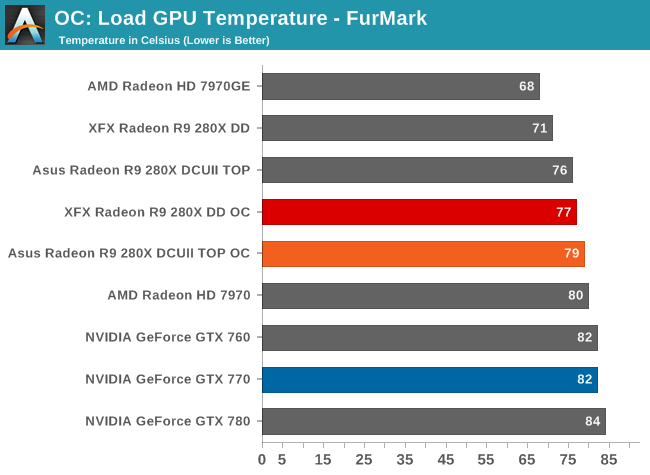
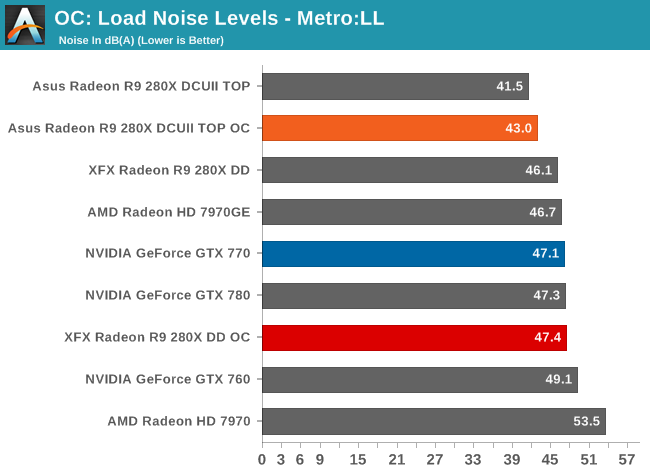
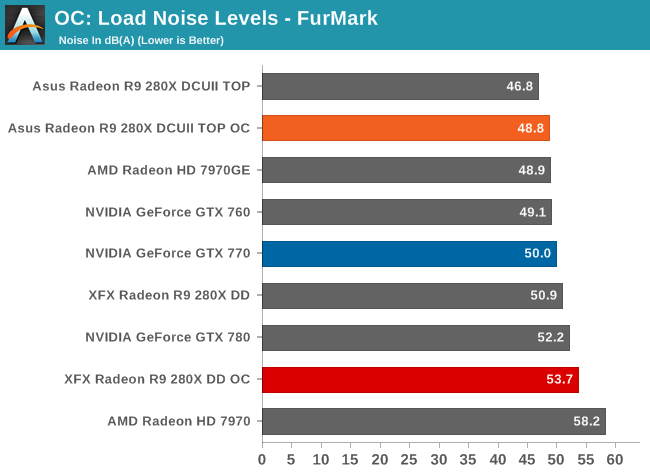
To the credit of the Asus card and its cooler, despite the increased clockspeeds, voltage, and power consumption, it’s able to keep GPU temperatures and load noise to reasonable levels given the circumstances. Still, with the increase in power required to achieve this overclock (particularly in the worst case scenario of FurMark) it’s hard to argue that the additional overclocking was worth the performance gains. With such an extensive factory overclock this is a card that may be better off left at factory clocks.
The XFX card meanwhile suffers much less of a power ramp up due to the lack of voltage control, but we’re still looking at something of a wash on the power/performance front.










151 Comments
View All Comments
Drumsticks - Tuesday, October 8, 2013 - link
I'm glad you managed to screw up and then point out every single one of your perceived faults with Anandtech and blame it all on them. That was impressive.By the way, you could have read even the title.
rtsurfer - Tuesday, October 8, 2013 - link
+1Perfectly summarized.
jasonelmore - Wednesday, October 9, 2013 - link
the title doesnt scream rebadge, and typically flagships are launched first, then the sister cards a few weeks later.Etern205 - Monday, October 14, 2013 - link
R8-280x is a rebadged HD7970GE, if they're based on the new architecture like the R9-290x then we won't be reading reviews on it until AMD lifts the NDA.rezztd - Tuesday, October 8, 2013 - link
Why can't they just use simple naming schemes? I've found AMD's names confusing and generally harder to remember than those from NVIDIA.piroroadkill - Tuesday, October 8, 2013 - link
Huh, for a long time I thought AMD's names were logical and ultra-simple, and it was NVIDIA who had the silly names with all their extra letters on the end.However, now the tables are clearly turning, and AMD's naming is terrible.
HisDivineOrder - Wednesday, October 9, 2013 - link
I find the RX 2xx/2xxX naming scheme to be really horrible imo. I have a feeling they did the shift as much to confuse and misdirect away from the fact they did a refresh as to begin a new naming policy because it doesn't really help the consumer.alwayssts - Tuesday, October 8, 2013 - link
I'm just waiting for the XFX info/overclocking page to load...I think if they made their 280x similar to their 37th (only slight hyperbole) revision of the original 7970, that could be a rad product. The current version is 9.3 inches (for tiny cases/htpcs) but purposely very limited in overclocking capabilities...it also sells for around $300 +- $20. If they took that design and were allowed an upped/unlocked voltage/clock spec (with perhaps voltage tuning), that could be a sweet (and tiny) 1080p gaming part compared to anything else that size/price.
Slomo4shO - Tuesday, October 8, 2013 - link
And I was looking forward to determining the overclock potential of this card...zeock9 - Tuesday, October 8, 2013 - link
So there hardly isn't a performance gain over the 7970GE, perhaps less than 5% if that,and they didn't even bother to include the new TrueAudio or Never Settle bundle.
What's the effing point of this 'new' card when 7970GE can already be had for the same price?
Shame on you AMD.